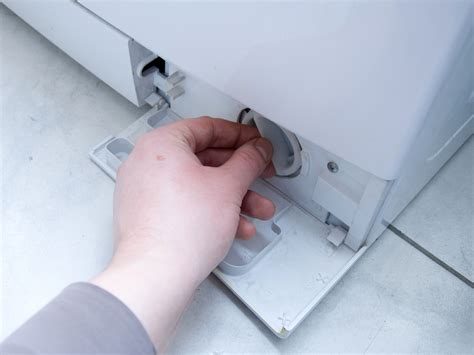No More Mildew Smell: Front Load Washer Fix
That musty, mildewy odor emanating from your front-load washer? It's a common problem, but thankfully, a fixable one. This article will guide you through identifying the source of the smell and implementing effective solutions to banish that unpleasant scent for good. We'll cover everything from simple cleaning techniques to addressing potential mechanical issues. Say goodbye to that lingering mildew smell and hello to fresh, clean laundry!
Why Does My Front Load Washer Smell Like Mildew?
Front-load washers, while energy-efficient, are unfortunately prone to mildew growth. The high-efficiency design, which uses less water than traditional top-loaders, creates a damp environment ideal for mold and mildew to thrive. Residual water left in the drum, seals, and dispensers provides the perfect breeding ground for these odor-causing culprits.
How to Get Rid of Mildew Smell in Front Load Washer: A Step-by-Step Guide
This comprehensive guide addresses the most common causes of mildew smells and provides practical solutions:
1. Deep Clean the Washer Drum and Seals
This is the most crucial step. Regular cleaning prevents mildew buildup before it becomes a significant problem.
-
Use a Washer Cleaning Tablet: Many brands offer cleaning tablets specifically designed for front-load washers. Follow the product instructions carefully. These tablets are formulated to remove soap scum, grime, and mildew.
-
DIY Solution: For a budget-friendly option, create a cleaning solution using white vinegar and baking soda. Pour two cups of white vinegar into the detergent dispenser and one cup of baking soda into the drum. Run a hot water cycle without laundry.
-
Manual Scrubbing: After the cycle, inspect the rubber seal around the door. This area often harbors mildew. Use a microfiber cloth or a soft brush to scrub the seal thoroughly. A solution of bleach and water (diluted according to package directions) can be used for stubborn mildew, but be sure to rinse thoroughly afterwards.
2. Clean the Dispenser Drawers
The detergent and fabric softener dispensers can also accumulate residue and mildew.
- Remove the Drawers: Carefully remove the drawers and wash them thoroughly with warm, soapy water. Use a small brush to clean out any stubborn residue.
- Rinse Thoroughly: Rinse the drawers and the compartments they sit in completely before reinstalling them.
3. Leave the Door Ajar
After each wash cycle, leaving the washer door slightly ajar allows air to circulate and prevent moisture from accumulating. This simple step significantly reduces mildew growth.
4. Check for Leaks
A leak, even a small one, can create a persistently damp environment that fosters mildew growth. Inspect the washer thoroughly for any signs of leaks and address them immediately.
5. Run a Self-Cleaning Cycle (If Available)
Many modern front-load washers have a built-in self-cleaning cycle. Consult your washer's manual to learn how to utilize this feature.
Addressing Mechanical Issues: When Cleaning Isn't Enough
If you've diligently cleaned your washer but the mildew smell persists, there might be a deeper mechanical issue.
Is the Drain Pump Clogged? A clogged drain pump can lead to water retention and mildew growth.
Is the Drain Hose Properly Installed? An improperly installed drain hose can cause water to back up into the washer.
Is There a Problem with the Water Supply Valves? Malfunctioning valves might be allowing water to leak into the machine.
These mechanical issues require professional attention. Contact a qualified appliance repair technician for diagnosis and repair.
Preventative Measures: Keeping Your Washer Fresh
Preventative measures are key to avoiding recurring mildew problems:
- Regular Cleaning: Clean your washer at least once a month, or even more frequently if you use it heavily.
- Air Circulation: Always leave the door ajar after each cycle.
- Proper Usage: Avoid overloading your washer, which can prevent proper rinsing and lead to moisture retention.
- Use Less Detergent: Excessive detergent can leave residue that contributes to mildew growth.
By following these tips and addressing any underlying mechanical issues, you can eliminate that stubborn mildew smell and keep your front-load washer fresh and clean. Remember, prevention is always better than cure!

